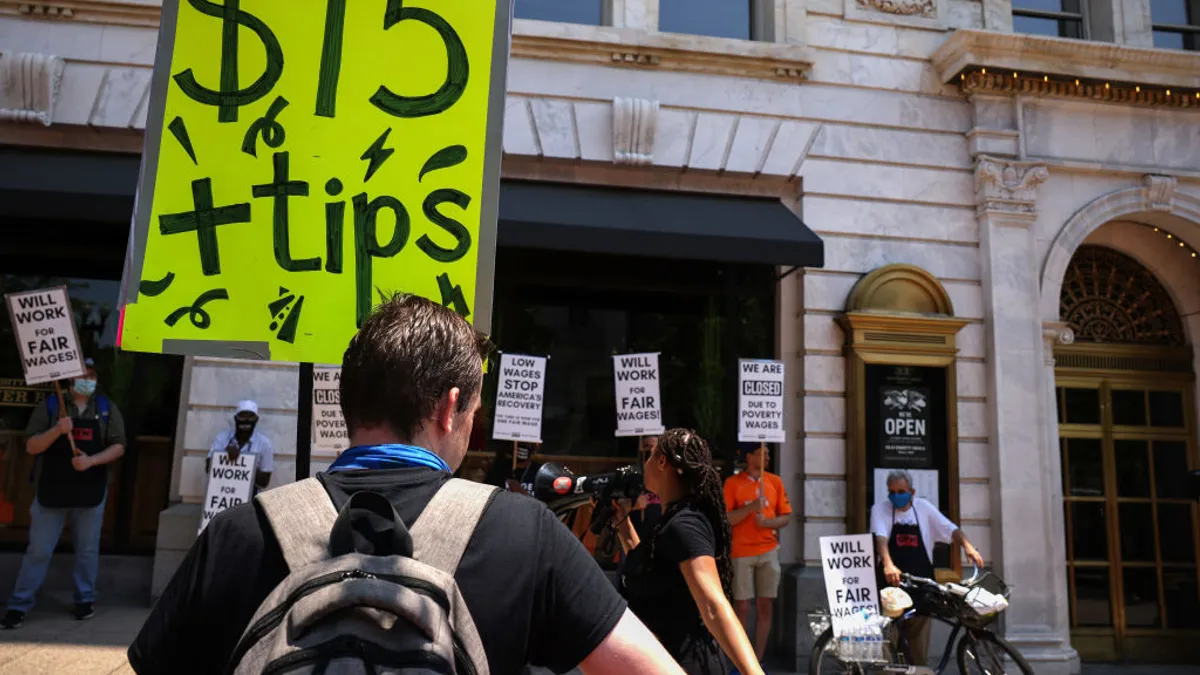Employees want to be heard, they want to express themselves and research shows that activism tied to those desires is increasingly spilling over into the workplace, presenters told attendees at the Society for Human Resource Management’s annual conference June 14.
But should HR get involved? And if so, how and when? Dennis Alan Davis, director of client training at Ogletree Deakins and Joseph Beachboard, managing director at the firm, addressed those questions for the HR pros in attendance by sharing several mistakes employers make when it comes to employee activism.
Mistake #1 – Thinking the First Amendment protects worker speech
Davis said he often hears that employees believe the First Amendment protects them from any consequences, and Beachboard said it’s a major misconception among employers as well.
While the Constitution may protect individuals from government action, “it says nothing about your employer, especially if you’re a private-sector employer,” Beachboard said. Public sector employers need to be aware of some coverage issues and generally, “your rights are guaranteed to you by your government, but that’s between you and your government, not you and your employer,” Davis added.
Mistake #2 – Believing the NLRA applies only to unionized workplaces
While the National Labor Relations Act is the law that grants workers the ability to organize, that’s not all it does, Davis and Beachboard said.
It protects workers’ rights to engage in concerted activity for mutual aid or protection. Historically, that referred to employees working together to secure better wages or hours, “but we have a new sheriff in town at the National Labor Relations Board, and her name is Jennifer Abruzzo,” Beachboard said. Abruzzo is aiming to expand the concept to include issues of social justice, economic fairness, racial justice and more, he continued.
In addition to keeping an eye on the NLRB, HR also must ensure employers are complying with similar state laws, the speakers said.
Mistake #3 – Skimping on manager training
“Make sure that you train your supervisors or managers or HR team in the elements of [protected concerted activity] and the potential pitfalls,” Davis recommended; HR should know and be able to communicate what the company will allow and what it won’t.
“You can avoid some really bad things if you make sure that you train supervisors, managers and HR,” he said.
Mistake #4 – Denying there’s a problem
One of the biggest mistakes employers make with respect to employee activism is denying that there’s even an issue at all, Davis said.
“I can't tell you how many times I've heard someone try to talk someone else out about their concern,” he continued. But just because it’s not an issue for you, doesn’t mean it’s not an issue for them: “Talking someone out of their concern is not productive,” he said.
Mistake #4 – Believing a workplace can be apolitical
It’s a mistake to think an employer can be apolitical, the speakers said. Several employers have tried to take this route in recent months, but the outcome remains to be seen.
“The fact of the matter is, organizations tend to have political bent and they tend to enforce certain policies and procedures that can have a political leaning,” Davis said.
Mistake #5 – Not choosing battles wisely
Davis and Beachboard said they often see employers failing to pick and choose which battles to fight.
If your employees want to walk out from noon until 12:30 p.m. in support of police reform, for example, “it seems to me that’s not a fight you want to have,” Davis said. “I see very often many employers just fight everything,” he continued, “but you’ve got to pick those fights.”
Mistake #6 – Expecting no dissent
Employers cannot expect a total lack of dissent among their staff, the presenters said. “There's going to be all kinds of dissent in your organization and as leaders or managers or supervisors or HR professionals, we have to manage that,” Davis said.
That means instead of prohibiting discussion about politics or religion, for example, teaching employees how to have a conversation, Davis continued. Workers often aren’t looking for HR or their managers to single-handedly fix these issues, the pair explained: Instead, they want to bring their whole selves to work and be heard, and employers can teach and encourage effective communication to support that need.












